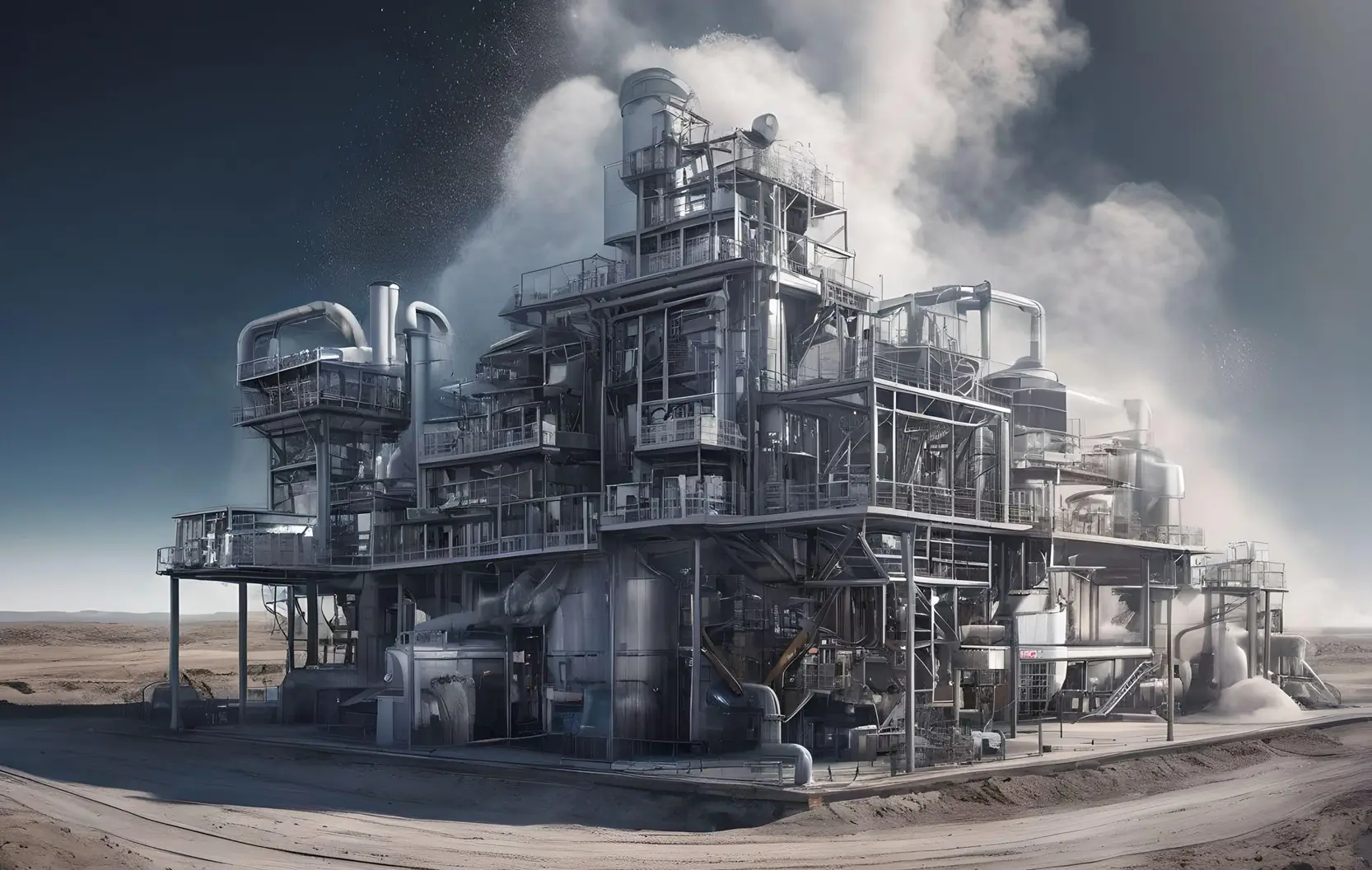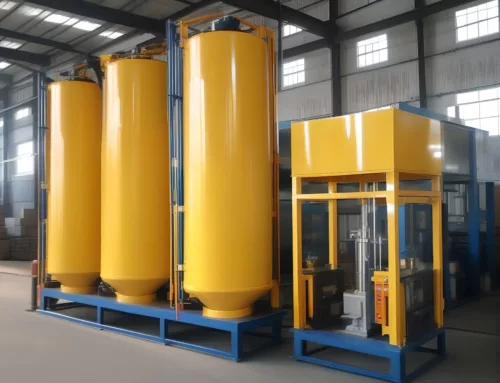
The future of energy and powder technology: An introduction
Our reality is defined by the flow of data — ones and zeros shaping our daily lives. This digital age has transformed our relationship with energy, highlighting its pivotal role in driving technological advancements and defining modern civilization. As we navigate the intersection of energy and technology, especially within powder technology, we confront a future with challenges and opportunities.
The Evolution of Energy: From Fire to Modernity
Energy is the bedrock of our existence, integral to nearly every facet of life. Historically, our understanding of energy has evolved from the rudimentary use of fire to the sophisticated technologies of today. The discovery and harnessing of energy have propelled human progress, from powering the Industrial Revolution to driving the digital age.
Consider the journey from basic fire—providing warmth, cooking, and protection—to the cutting-edge technologies of the 21st century, such as smartphones and high-performance computing.
Each advancement represents a leap in our ability to harness and utilize energy, but it also raises pressing questions about how we will meet future energy demands.
The search for more efficient and sustainable energy sources is ongoing. Innovations such as solar and wind power are promising, but they come with their respective challenges, such as intermittency and high initial costs. The push for sustainability is crucial, yet it must be balanced with practical considerations and existing infrastructure.
Current Energy Landscape:
The Fossil Fuel Dilemma
Despite growing concerns about climate change and environmental sustainability, fossil fuels—oil and gas—remain dominant in the global energy market. This enduring reliance on fossil fuels underscores a complex interplay between market forces, geopolitical interests, and environmental considerations.
The reality is that, while renewable energy technologies are advancing, they still represent a small fraction of the global energy mix.
Fossil fuels continue to be the primary energy source, largely due to the extensive infrastructure already in place and the substantial investments directed toward their development and expansion.
For instance, the energy sector’s investment in oil and gas infrastructure remains robust, driven by persistent demand and geopolitical factors. This ongoing commitment to fossil fuels reflects the challenge of transitioning to alternative energy sources, despite the growing emphasis on reducing carbon footprints and addressing climate change.
Technological Advances and Their Growing Energy Demands
As technology evolves, so do our energy needs. New technologies such as data centers, artificial intelligence (AI), and electric vehicles (EVs) are driving a significant increase in energy consumption. Data centers, which are vital for cloud computing and big data analytics, have seen their energy use rise dramatically, with increasing demands on the horizon.
AI, in particular, has become a major driver of energy demand. Advanced AI systems, including machine learning and neural networks, require substantial computational power, translating into higher energy consumption. For example, processing a single query through ChatGPT consumes about 2.9 watt-hours, compared to just 0.3 watt-hours for a Google search. This disparity highlights the considerable energy footprint of modern AI systems.
Electric vehicles, too, contribute to the rising energy demands. While they offer a cleaner alternative to traditional internal combustion engines, the energy required to manufacture and charge EVs presents its own set of challenges.
As EV adoption grows, so does the need for more energy-intensive charging infrastructure.
The Global Energy Landscape:
Challenges and Opportunities
The global energy landscape is characterized by a heavy reliance on fossil fuels (~80-84%), with nuclear power (~4-5%) and renewable sources (~12-16%) playing smaller roles. This energy mix presents significant challenges as we strive to meet the growing demands of emerging technologies.
To address these challenges, substantial investments are needed in energy infrastructure. For instance, estimates suggest that U.S. utilities may require over $50 billion to support future growth, while the European Union could need €600-700 billion by 2030 for infrastructure upgrades. These investments are crucial to expanding and modernizing energy systems, ensuring they can meet the demands of new technologies.
However, the transition to renewable energy sources is not without its hurdles. Issues such as intermittency, high costs, and the need for improved storage solutions must be addressed. Balancing these factors with the need for reliable, scalable power is a significant challenge as we move towards a more sustainable energy future.
The Future of AI and Its Impact on Energy Consumption
The rise of AI and its future iterations, such as Artificial General Intelligence (AGI) and Artificial Superintelligence (ASI), will have a profound impact on energy consumption. Data centers, which currently account for about 1-3% of global electricity use, project to see their energy needs triple in the next decade.
AI technologies are expected to represent a significant portion of data center power demand. By 2030, AI could account for up to 20% of total data center power consumption, adding approximately 200 terawatt-hours (TWh) of electricity annually. This increase highlights the urgent need for efficient data center infrastructure and energy management strategies.
The energy footprint of AI systems is considerable. Advanced AI models, with billions or even trillions of parameters, require substantial computational power. As these models become more sophisticated, their energy demands are likely to grow. This trend underscores the need for innovations in energy-efficient computing and infrastructure design.
Impacts on Other Industries and Infrastructure Needs
The anticipated surge in energy demand from AI and other technologies will have ripple effects across various industries. Sectors such as pharmaceuticals, agriculture, and food production, which collectively consume approximately 30-40% of global energy, may face challenges in securing adequate power supplies.
To mitigate these challenges, industries will need to invest in energy-efficient technologies and explore alternative energy sources. For example, companies in the powder technology sector may need to adopt AI-driven solutions to optimize production and reduce energy consumption. Additionally, investing in renewable energy sources and energy storage systems could help manage supply and demand fluctuations.
Infrastructure improvements will be essential to supporting the growing energy needs of emerging technologies. Utilities and governments must work together to develop and implement strategies for expanding and modernizing energy infrastructure. This includes upgrading generation, transmission, and distribution systems to meet the demands of new technologies.
Navigating The future of energy and powder technology Challenges
Addressing the growing energy demands of AI and other technologies requires a multifaceted approach. Companies must invest in energy-efficient solutions, explore renewable energy options, and consider self-generation strategies to meet their energy needs while achieving sustainability goals.
A collaborative approach among technology developers, energy providers, and industry stakeholders will be crucial.
Strategic planning and innovation will play key roles in ensuring that the increasing energy demands do not compromise the operational capabilities of critical sectors.
Moreover, addressing these challenges requires not only technological advancements but also thoughtful consideration of energy policies and infrastructure investments. By proactively addressing these issues, we can navigate the complexities of our energy future while fostering technological progress and sustainability.
Conclusion
The future of energy and powder technology is intertwined with the advancements in AI and other emerging technologies. As our energy demands continue to rise, balancing technological growth with sustainability will be paramount. The transition to renewable energy sources, investment in energy-efficient technologies, and infrastructure improvements are essential to meeting future energy needs.
The path forward involves significant collaboration and innovation. By addressing challenges and embracing new solutions, we ensure that the growing energy needs of AI and other technologies do not undermine our operational capabilities or sustainability goals. As we move towards this future, the lessons learned and strategies developed will shape our ability to thrive in an increasingly energy-dependent world.




